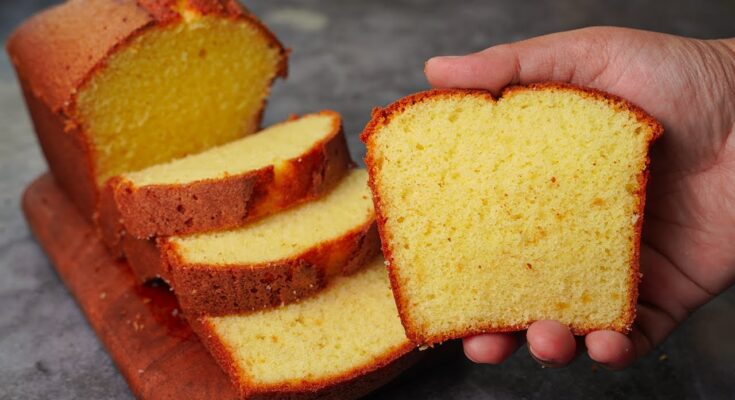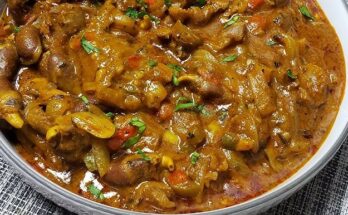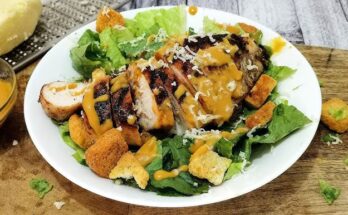Homemade Hot Cakes Recipe: Hot cakes, also known in some places as pancakes, are a breakfast staple enjoyed by millions across the globe. Soft, fluffy, and golden brown, these delightful discs of joy are usually made with a blend of flour, eggs, milk, and baking powder. Unlike store-bought or instant mixes, homemade hot cakes bring a level of warmth, authenticity, and freshness to the table that you just can’t find in pre-packaged options.
They’re not just breakfast food either—hot cakes can be enjoyed as brunch, dessert, or even a late-night snack. Their versatility in both flavor and texture makes them a favorite across all age groups.
Why Make Hot Cakes at Home?
So, why should you go the homemade route when you can grab a box from the store? Simple—control and quality. When you make hot cakes at home, you’re the boss of every ingredient that goes in. Want them fluffier? Add more baking powder. Need them gluten-free? Use almond or oat flour. Trying to cut sugar? Use bananas or applesauce for natural sweetness.
Making hot cakes from scratch also ensures that there are no artificial preservatives, excess sugar, or unpronounceable additives sneaking into your breakfast. Plus, it’s surprisingly quick and fun, making it a great activity for weekends, family bonding, or even impressing someone special with a hearty homemade breakfast.
Ingredients You’ll Need
Basic Ingredients for Hot Cakes
You don’t need a chef’s pantry to make amazing hot cakes. Here’s your basic ingredient checklist:
- 1 cup all-purpose flour – this forms the structure
- 1 tablespoon sugar – for a hint of sweetness
- 1 tablespoon baking powder – your fluffy factor
- 1/4 teaspoon salt – enhances flavor
- 1 cup milk – adds moisture and helps combine everything
- 1 egg – binds ingredients and adds richness
- 2 tablespoons melted butter or oil – adds a moist texture and prevents sticking
All these items are common kitchen staples, which means you likely already have them on hand.
Optional Add-ins and Variations
Want to add a bit of flair? Try mixing in:
- Vanilla extract – for aromatic flavor
- Cinnamon or nutmeg – to warm up the taste
- Chocolate chips or blueberries – for bursts of sweetness
- Mashed banana or grated apple – for natural sweetness and extra moisture
- Buttermilk instead of regular milk – for a tangy depth and even fluffier cakes
With these extras, you can create everything from classic diner-style hot cakes to gourmet brunch-worthy stacks.
Kitchen Tools Required
Must-Have Utensils for Hot Cake Prep
Here’s a simple list of kitchen tools you’ll need to make hot cakes with ease:
- Mixing bowls – for combining dry and wet ingredients separately
- Whisk or fork – for mixing batter smoothly
- Measuring cups and spoons – to get the right balance of ingredients
- Spatula – essential for flipping your hot cakes without tearing them
If you’re planning to make this a regular recipe in your home, investing in good-quality tools will make your cooking experience more enjoyable.
Recommended Cooking Equipment
While you can technically make hot cakes on any frying pan, here are a few suggestions for better results:
- Non-stick skillet or griddle – reduces the need for excess oil and makes flipping easier
- Electric griddle – great for making multiple hot cakes at once
- Cast-iron skillet – offers consistent heat for evenly cooked cakes
Preheating your pan properly is one of the secrets to getting that beautiful golden-brown finish on each hot cake.
Step-by-Step Guide to Making Hot Cakes
Step 1: Preparing the Batter
First things first—get your ingredients ready and pre-measured. In one bowl, mix all the dry ingredients: flour, sugar, baking powder, and salt. In a separate bowl, whisk together the wet ingredients: milk, egg, and melted butter.
Once both mixtures are ready, gently pour the wet mix into the dry ingredients. Stir just until combined—overmixing can make your hot cakes rubbery. It’s okay if there are a few lumps; they’ll work themselves out during cooking.
Let the batter rest for about 5 minutes while you heat your pan. This allows the baking powder to activate and gives your hot cakes extra lift.
Step 2: Preheating the Pan
Turn your burner to medium heat and allow your pan or griddle to warm up for a few minutes. A simple trick to test readiness: sprinkle a few drops of water on the surface. If they sizzle and evaporate quickly, you’re good to go.
Lightly grease the surface with butter or oil. You want a thin coating—too much fat will fry your cakes, too little might cause them to stick.
Now you’re ready to cook some golden magic.
Step 3: Cooking the Hot Cakes
Once your pan is heated and greased, it’s time to pour that delicious batter. Use a ladle or measuring cup (1/4 cup is a good standard size) to pour the batter onto the hot pan. Try not to crowd the pan—give each hot cake enough space to expand and breathe.
Now here’s the trick: don’t touch it too soon. Let the batter sit and cook for about 2 to 3 minutes. You’ll know it’s ready to flip when small bubbles start to form and pop on the surface. The edges will also look a bit dry and set.
Avoid the temptation to press down with a spatula—this will only flatten your hot cakes and squeeze out all the fluff. Be patient, and let them cook until the bottoms are a rich golden brown.
Flip gently and cook the other side for about 1-2 more minutes. The second side cooks faster, so keep an eye on it.
Step 4: Flipping and Finishing Touches
Flipping might seem tricky at first, but a confident and quick motion works best. Slide the spatula fully under the hot cake, lift slightly, and flip in one fluid movement. If it folds or lands off-center, no worries—homemade hot cakes are all about character!
Once both sides are golden brown, transfer your hot cakes to a plate. Keep them warm by covering with a clean towel or placing them in a low-temperature oven (around 200°F or 90°C).
Repeat until all batter is used. If the pan gets too dry or sticky between batches, re-grease lightly.
You can stack them high, dust with powdered sugar, or go wild with toppings (we’ll get into that soon). Either way, your house is about to smell like a cozy breakfast café.
Tips for Perfect Hot Cakes
Avoiding Common Mistakes
Even simple recipes like hot cakes can have a learning curve. Here are some common pitfalls—and how to avoid them:
- Overmixing the batter: This leads to dense, chewy hot cakes. Stir just until the ingredients are combined.
- Using a cold pan: Always preheat! A cold pan will absorb the batter, making the cakes uneven.
- Flipping too early: Wait for bubbles to pop and the edges to look dry. Premature flipping causes mess and breakage.
- High heat cooking: Keep the heat medium. Too high, and you’ll burn the outside while leaving the inside raw.
- Skipping rest time: Letting the batter sit for 5-10 minutes helps the ingredients activate and results in a better rise.
Texture and Flavor Enhancements
Want to elevate your hot cakes from good to unforgettable?
- Add Greek yogurt or sour cream to your batter for richness and tang.
- Try sparkling water instead of regular milk for ultra-light and fluffy texture.
- Use brown sugar or honey instead of white sugar for deeper flavor.
- Mix in spices like cinnamon, cardamom, or even a pinch of clove for a warm, aromatic finish.
Tiny tweaks can make a big difference. Play around with different combos until you find your signature hot cake style.
Serving Suggestions
Classic Toppings
No hot cake is complete without a killer topping. Here are the timeless favorites:
- Maple syrup – the classic, rich, and golden sweetener
- Butter – melting on top of warm hot cakes is pure magic
- Fresh fruits – strawberries, bananas, or blueberries add freshness
- Whipped cream – light and indulgent
- Powdered sugar – a delicate snow-like sprinkle for presentation
These combinations are popular for a reason—they’re absolutely delicious.
Creative Ideas to Elevate Your Plate
Feeling adventurous? Take your hot cake game to the next level:
- Nut butters – peanut, almond, or cashew butter for protein and flavor
- Yogurt and granola – a breakfast bowl stacked on hot cakes
- Savory twist – add a fried egg, avocado slices, and a dash of sriracha
- Dessert style – top with ice cream, chocolate drizzle, and crushed cookies
- Caramelized fruit – sauté apples or peaches in butter and cinnamon
Whether you want indulgent or healthy, classic or modern, there’s no limit to how you can serve hot cakes.
Storing and Reheating
Best Storage Practices
Made too many? Lucky you—hot cakes store well!
Let them cool completely before storing to avoid sogginess. Place in an airtight container or zip-lock bag with parchment paper between each one to prevent sticking. Store in the refrigerator for up to 4 days.
For longer storage, freeze them. Lay flat on a tray, freeze for 30 minutes, then transfer to a freezer-safe bag. They’ll stay good for about two months.
Reheating Without Losing Freshness
Reheating is easy, but technique matters:
- Microwave: Wrap in a paper towel and heat for 20-30 seconds. Quick but can turn soggy.
- Toaster: Great for a slight crisp on the outside.
- Oven: Preheat to 350°F (175°C), cover hot cakes with foil, and warm for 10 minutes.
Avoid reheating more than once—they tend to dry out after the second round.
FAQs about Homemade Hot Cakes Recipe
Q1: What’s the difference between hot cakes and pancakes?
Hot cakes and pancakes are often used interchangeably, but hot cakes are typically thicker and slightly denser, while pancakes are lighter and fluffier. Both are delicious breakfast options!
Q2: Can I use water instead of milk in my hot cakes?
Yes, you can use water, but milk adds more flavor and a richer texture. If you’re out of milk, try using a dairy-free alternative like almond or oat milk.
Q3: How do I make my hot cakes fluffier?
To get fluffier hot cakes, avoid overmixing the batter. Also, let the batter rest for about 5–10 minutes before cooking. Using fresh baking powder helps too.
Q4: Can I prepare hot cake batter ahead of time?
It’s best to make the batter fresh, but you can refrigerate it for up to 24 hours. Just give it a gentle stir before using—don’t overmix!
Q5: Why are my hot cakes not browning properly?
Make sure your pan is preheated and lightly greased. If the heat is too low, they’ll cook without browning. Medium heat usually works best.
Q6: Can I freeze leftover hot cakes?
Absolutely! Let them cool completely, then stack with parchment paper in between and freeze in an airtight bag. Reheat in a toaster or microwave when ready to eat.
Q7: What toppings go well with hot cakes?
Classic options include maple syrup, butter, honey, fresh fruits, whipped cream, and chocolate chips. You can also go savory with cheese or scrambled eggs.
Conclusion
Hot cakes are the kind of comfort food that bring people together. Whether it’s a quiet Sunday morning or a holiday brunch with loved ones, these fluffy beauties never disappoint. And the best part? They’re incredibly easy to make from scratch.
With just a few pantry staples, some patience, and a little bit of love, you can whip up a stack of homemade hot cakes that taste like they came straight from your favorite diner. So the next time you’re craving a hearty breakfast, skip the box and go homemade. Your taste buds (and your guests) will thank you.



